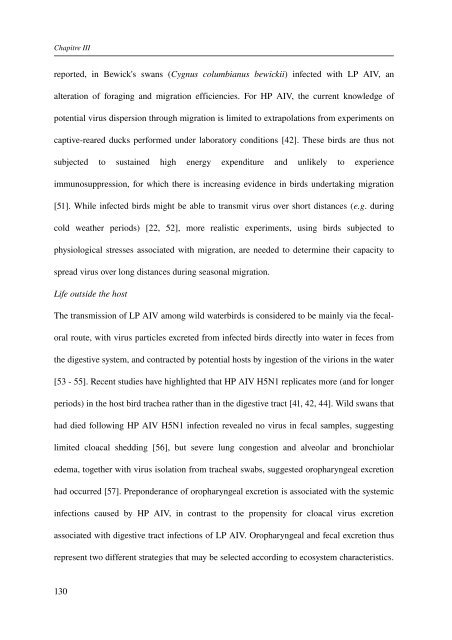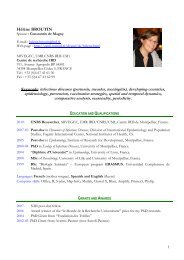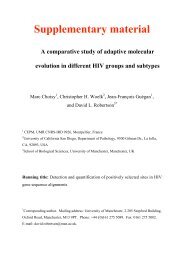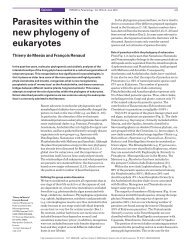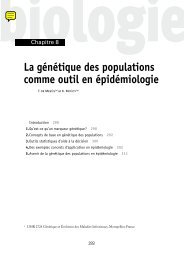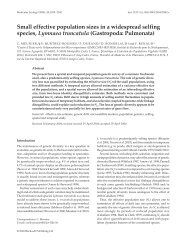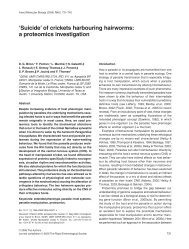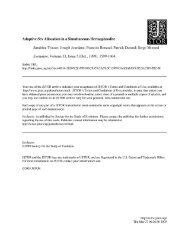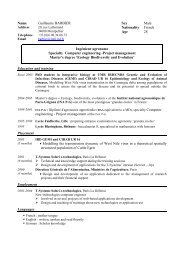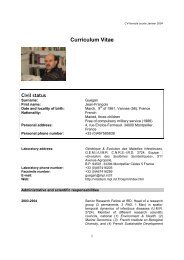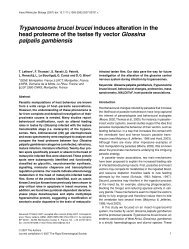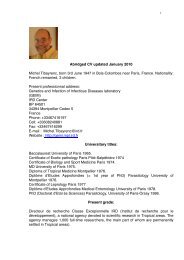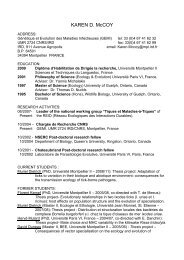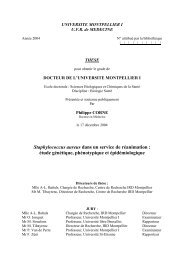écologie des virus influenza aviaires en Camargue - IRD
écologie des virus influenza aviaires en Camargue - IRD
écologie des virus influenza aviaires en Camargue - IRD
Create successful ePaper yourself
Turn your PDF publications into a flip-book with our unique Google optimized e-Paper software.
Chapitre IIIreported, in Bewick's swans (Cygnus columbianus bewickii) infected with LP AIV, analteration of foraging and migration effici<strong>en</strong>cies. For HP AIV, the curr<strong>en</strong>t knowledge ofpot<strong>en</strong>tial <strong>virus</strong> dispersion through migration is limited to extrapolations from experim<strong>en</strong>ts oncaptivereared ducks performed under laboratory conditions [42]. These birds are thus notsubjected to sustained high <strong>en</strong>ergy exp<strong>en</strong>diture and unlikely to experi<strong>en</strong>ceimmunosuppression, for which there is increasing evid<strong>en</strong>ce in birds undertaking migration[51]. While infected birds might be able to transmit <strong>virus</strong> over short distances (e.g. duringcold weather periods) [22, 52], more realistic experim<strong>en</strong>ts, using birds subjected tophysiological stresses associated with migration, are needed to determine their capacity tospread <strong>virus</strong> over long distances during seasonal migration.Life outside the hostThe transmission of LP AIV among wild waterbirds is considered to be mainly via the fecaloralroute, with <strong>virus</strong> particles excreted from infected birds directly into water in feces fromthe digestive system, and contracted by pot<strong>en</strong>tial hosts by ingestion of the virions in the water[53 55]. Rec<strong>en</strong>t studies have highlighted that HP AIV H5N1 replicates more (and for longerperiods) in the host bird trachea rather than in the digestive tract [41, 42, 44]. Wild swans thathad died following HP AIV H5N1 infection revealed no <strong>virus</strong> in fecal samples, suggestinglimited cloacal shedding [56], but severe lung congestion and alveolar and bronchiolaredema, together with <strong>virus</strong> isolation from tracheal swabs, suggested oropharyngeal excretionhad occurred [57]. Preponderance of oropharyngeal excretion is associated with the systemicinfections caused by HP AIV, in contrast to the prop<strong>en</strong>sity for cloacal <strong>virus</strong> excretionassociated with digestive tract infections of LP AIV. Oropharyngeal and fecal excretion thusrepres<strong>en</strong>t two differ<strong>en</strong>t strategies that may be selected according to ecosystem characteristics.130


